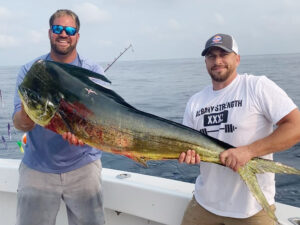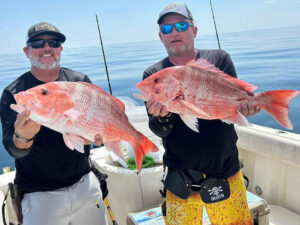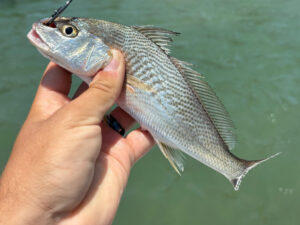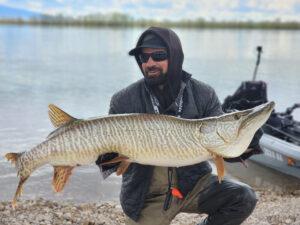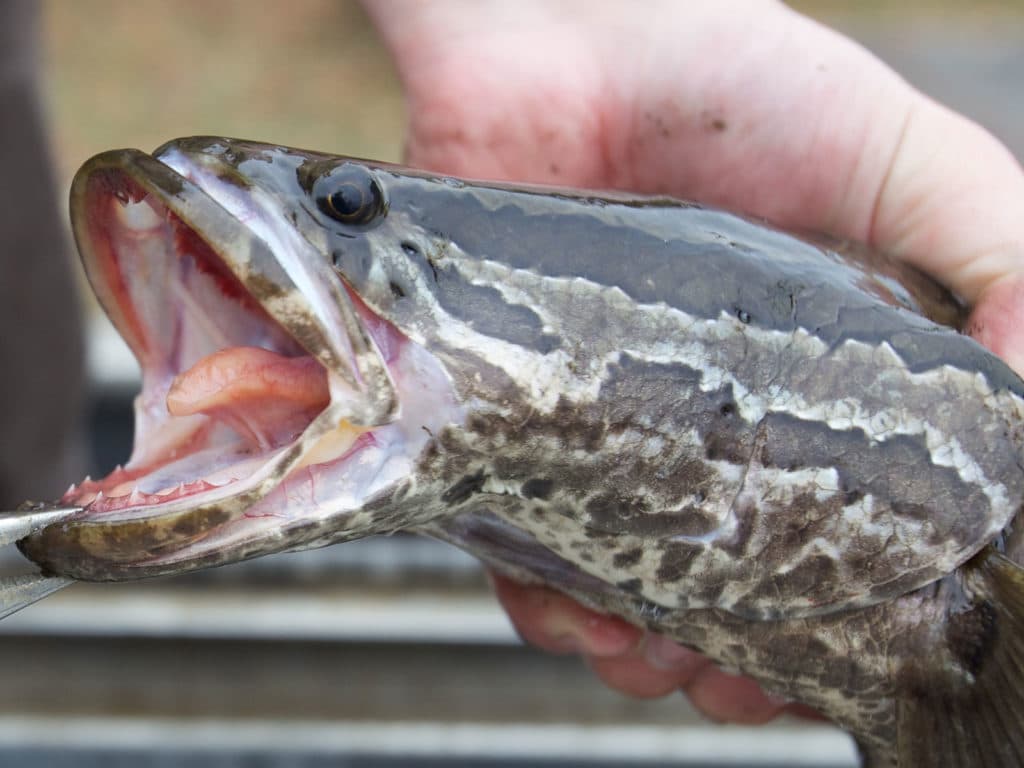
Snakeheads have a fanatical following. The species’ propensity to attack a topwater frog with vengeance is completely addicting. But, it must be said, snakehead species are not native to the United States, and almost assuredly have negative ecological effects on waters they’re not supposed to be in. Anglers should not release them if they catch one. Florida prohibits the import, sale, possession, and transport of snakeheads, plus snakeheads are banned from importation at the federal level.
Still, diehards in Southeast Florida have grown accustomed to fishing for the freshwater invasives in the Cypress Creek canal system and lakes that pepper the area. There are enough snakeheads around that they won’t soon be disappearing from southern Florida. In particular, the bullseye snakehead (Channa marulius) has established itself in areas such as Coral Springs, Sunrise and Margate, far from its native waters of Southeast Asia.
Snakeheads Found in Manatee County Florida
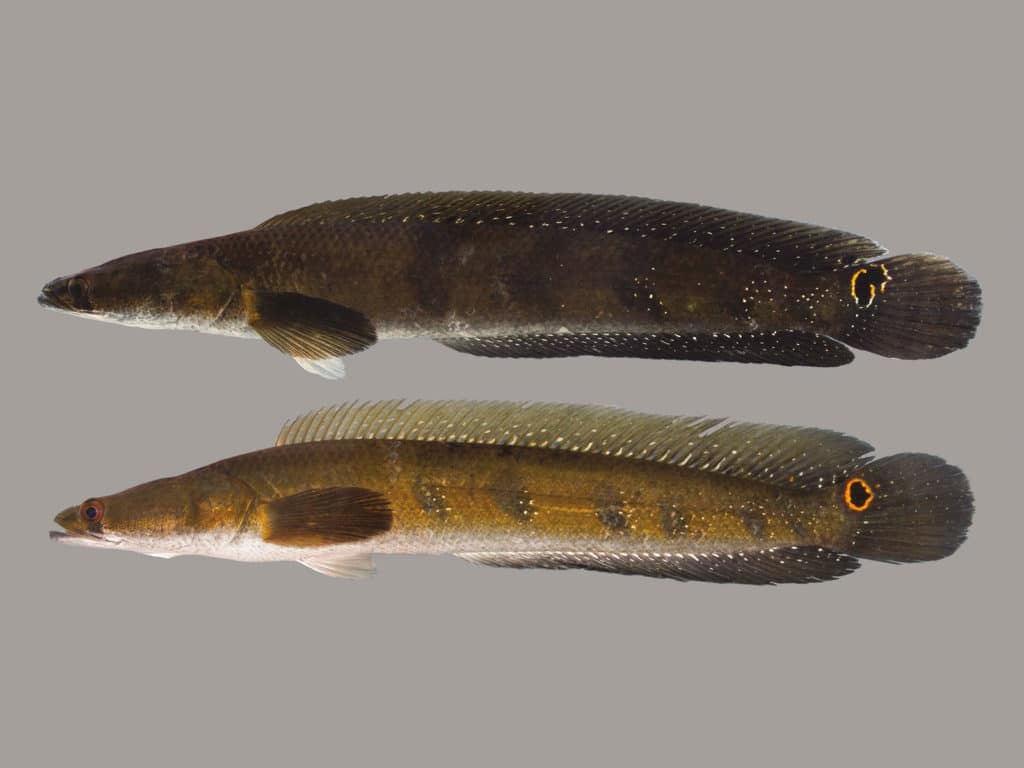
Researchers recently revealed another population of snakeheads were discovered in a freshwater pond on the Gulf Coast of Florida, not far from Williams Creek, a tributary of the Braden River, as part of a published study in the journal Aquatic Invasions. The fish were first spotted in June 2020 by one of the authors, Matthew Kail, via sampling efforts in a large retention pond.
“We intensively sampled fishes on multiple occasions, including the pond site and nearby waters during the remainder of 2020 and into May 2021,” said the study. “The main purpose was to ascertain the distribution and abundance of the snakehead population.”
Florida Fish and Wildlife Conservation Commission (FWC) authorities used electrofishing units and hand nets to sample Williams Creek, ditches, and nearby shallow-water habitats. Surprisingly, snakeheads weren’t found anywhere outside the pond, leading researchers to believe they were confined to that one area.
The snakeheads found in the freshwater pond were identified as goldline snakeheads (Channa aurolineata). Because snakeheads are not well-studied and many species are similar, goldline and bullseye snakeheads were previously considered the same species. New research in the last decade has shown strong evidence that aurolineata (goldline snakehead) is a distinct species, distinguishable from other marulius (bullseye) snakeheads. Yep, you read that right — bullseye snakeheads. To confuse matters further, a number of similar fish species are all grouped together under the common name bullseye snakehead.
A Predator Out of the Water
One of the more astounding observations reported in the paper was that goldline snakeheads were observed hunting on land. On a rainy night in 2020, several fish were observed on wet grass, near the water’s edge, attacking and eating Florida-native green tree frogs.
“During their terrestrial feeding bout, a snakehead used a rapid sideways thrust of the head, lunging toward a nearby frog and then using its jaws to grasp the prey,” said the paper. That out-of-water feeding behavior hasn’t been observed often in the wild, mostly just in lab settings.
Snakeheads are “proficient” air breathers and can handle waters with little oxygen. Savvy anglers know to target snakeheads in swampy or stagnant waters, similar to waters that hold bowfin (fish that can also breathe air), where other fish species don’t thrive. But snakeheads are exceptional in that they can travel on land, able to search out and find new waters. And that has scientists concerned about their ability to spread quickly across places such as Florida.
How They Got Here
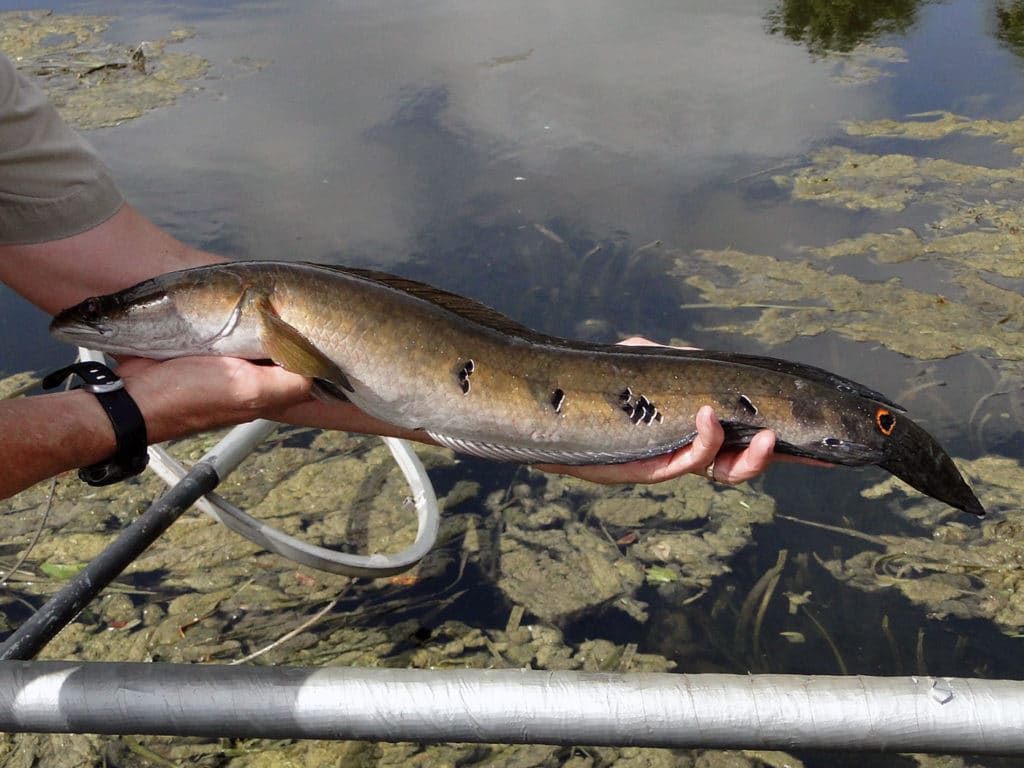
Genetic and morphological data gathered from studying the Manatee County snakeheads found enough similarities to the Southeast Florida population to connect the two. Although Southeast Florida snakeheads have expanded from Broward County, to Miami Dade and Palm Beach counties, they probably didn’t complete the 155-mile-plus land journey to Manatee County on their own.
Snakeheads transport well, surviving for hours out of the water if kept a bit damp, hence their popularity in the international live-food trade and the ornamental fish trade.
“The Manatee County population likely [happened because] humans, either directly or indirectly, transferred live individuals from Southeast Florida waters to Manatee County,” said the paper. And because there was an abundant population of snakeheads of different sizes found there in 2020, scientists believe the introduction probably happened three or four years prior.
The Snakeheads Had to Die
Using electrofishing gear and nets in late 2020 and early 2021, the research team removed hundreds of snakeheads from the west coast pond, but the efforts didn’t wipe out the entire population.
“[Some of the] juvenile and adult snakehead specimens taken from the pond during our 2020–2021 visits were preserved as vouchers,” said the paper. “Most of this material was deposited and cataloged in the ichthyological collection of the Florida Museum of Natural History-University of Florida, in Gainesville, Florida.”
FWC authorities used the fish toxicant rotenone to kill the rest of the snakeheads. After receiving permission from local landowners to “renovate” the pond’s entire fish population, staffers dispensed a commercially-available liquid formulation called Prenfish via boats and backpack sprayers in May 2021. The treatment killed an additional 48 snakeheads, which were counted, measured and weighed.
The eradication efforts were a success. No snakeheads were spotted during an electrofishing survey of the pond by FWC biologists in January 2022. Still, periodic monitoring of the pond and entire watershed is planned.
All Florida anglers should be on the lookout for snakeheads, especially in areas where they’re not already established. Go grab your favorite frogging stick in the name of science.

